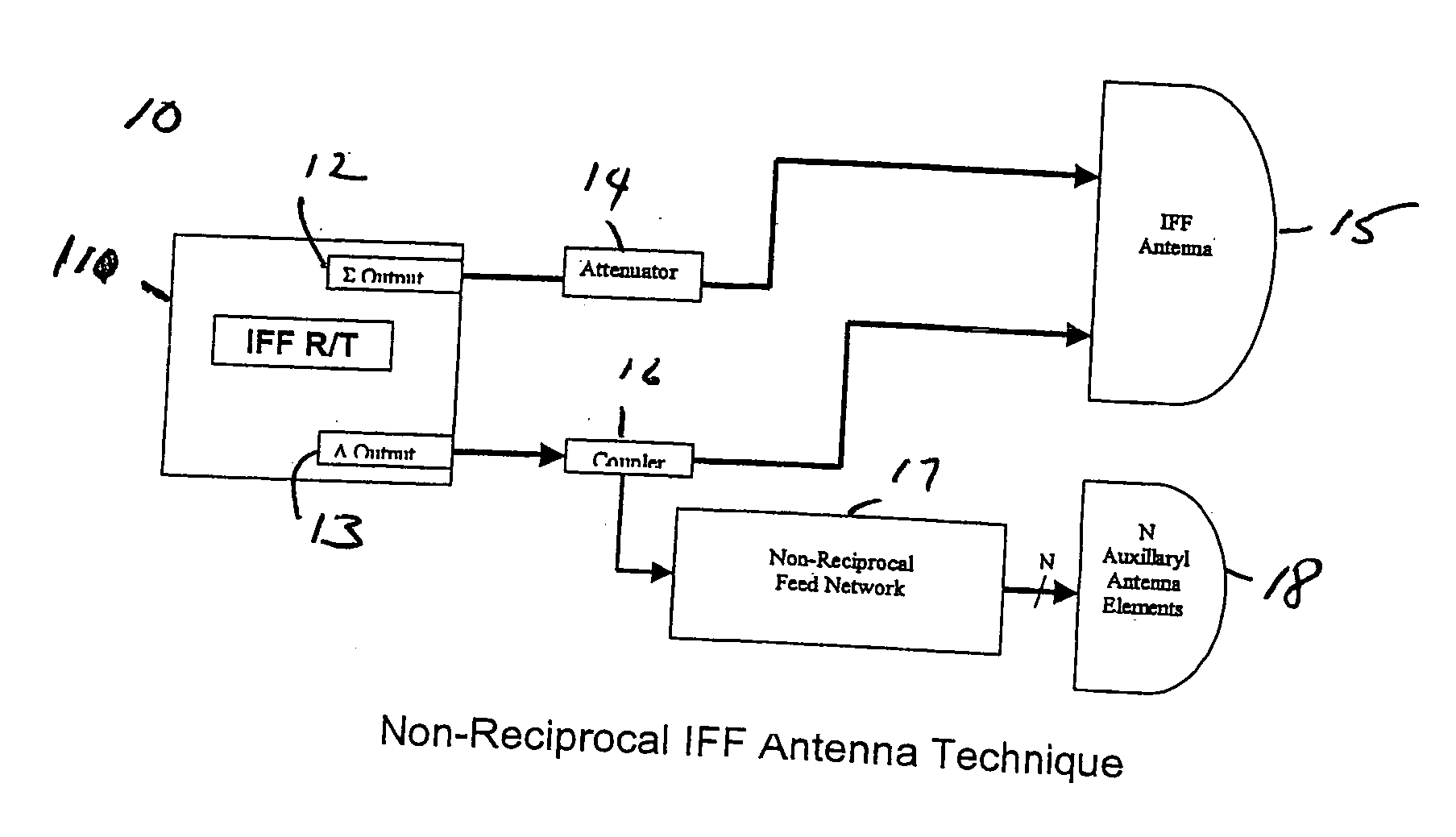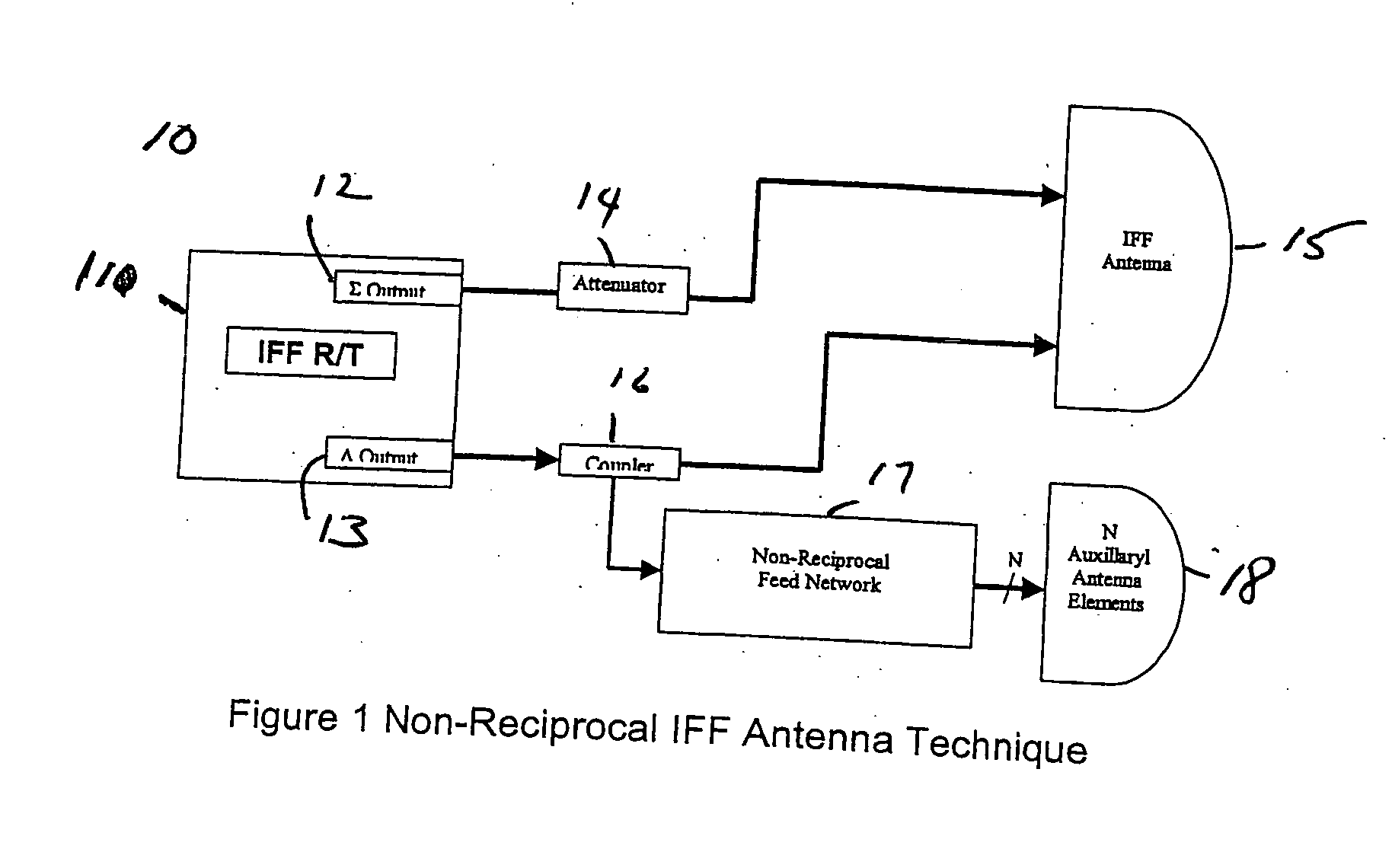System and method for suppressing IFF responses in the sidelobes and backlobes of IFF interrogator antennas
a technology of sidelobes and backlobes, which is applied in the field of system and method for suppressing iff responses in the sidelobes and backlobes of iff interrogator antennas, and can solve problems such as null degrees
- Summary
- Abstract
- Description
- Claims
- Application Information
AI Technical Summary
Benefits of technology
Problems solved by technology
Method used
Image
Examples
Embodiment Construction
[0025]FIG. 1 depicts a representative block diagram for the system 10 employing a non-reciprocal antenna method of the present invention. The system includes an IFF Receiver / Transmitter 11 that generates an Σ signal 12 and a Δ signal 13. The Σ signal is sent to an Attenuator 14 and from there the Σ signal is then sent to the IFF Antenna 15. The number, type and configuration of the antennas making up the antenna may vary widely according to the particular application. However, in most aircraft, IFF antennas are small vertical aperture IFF antennas. The present invention is particularly advantageous with small vertical aperture IFF antennas. There may be one or more IFF antennas on the aircraft. Additionally, the overall height of the antenna(s) can vary as well. Where there are a plurality of antennas they can, if desired, be arranged in one or more rows. In one embodiment, where the number of rows of antenna elements is “n”, the total height of the antenna containing n rows can be ...
PUM
 Login to View More
Login to View More Abstract
Description
Claims
Application Information
 Login to View More
Login to View More - R&D
- Intellectual Property
- Life Sciences
- Materials
- Tech Scout
- Unparalleled Data Quality
- Higher Quality Content
- 60% Fewer Hallucinations
Browse by: Latest US Patents, China's latest patents, Technical Efficacy Thesaurus, Application Domain, Technology Topic, Popular Technical Reports.
© 2025 PatSnap. All rights reserved.Legal|Privacy policy|Modern Slavery Act Transparency Statement|Sitemap|About US| Contact US: help@patsnap.com



